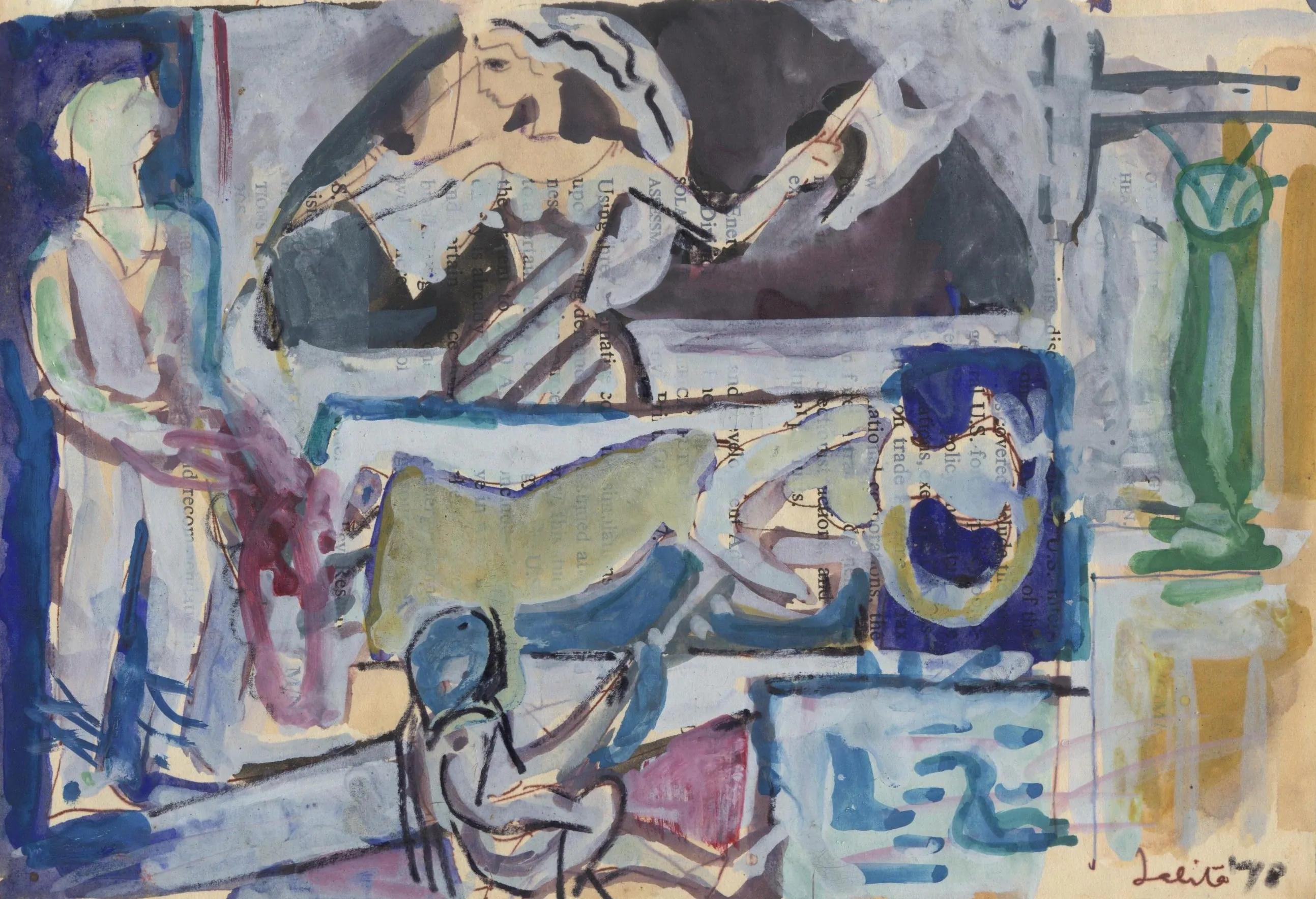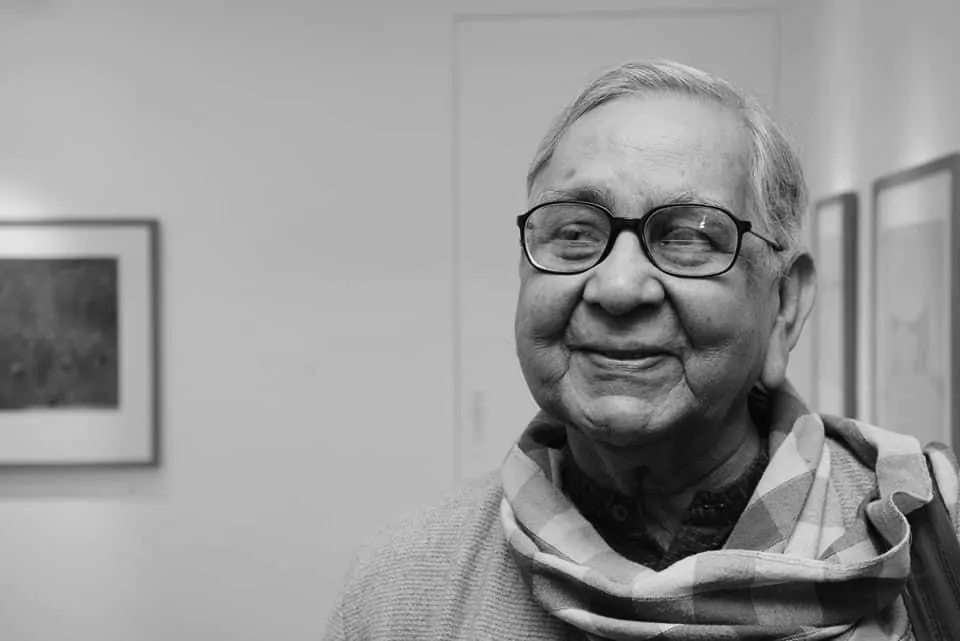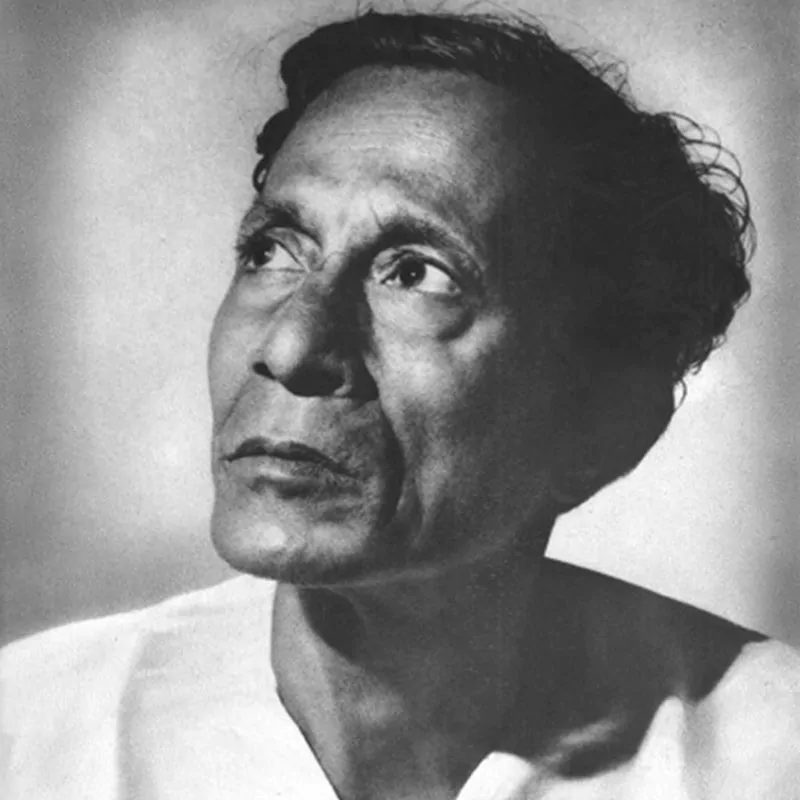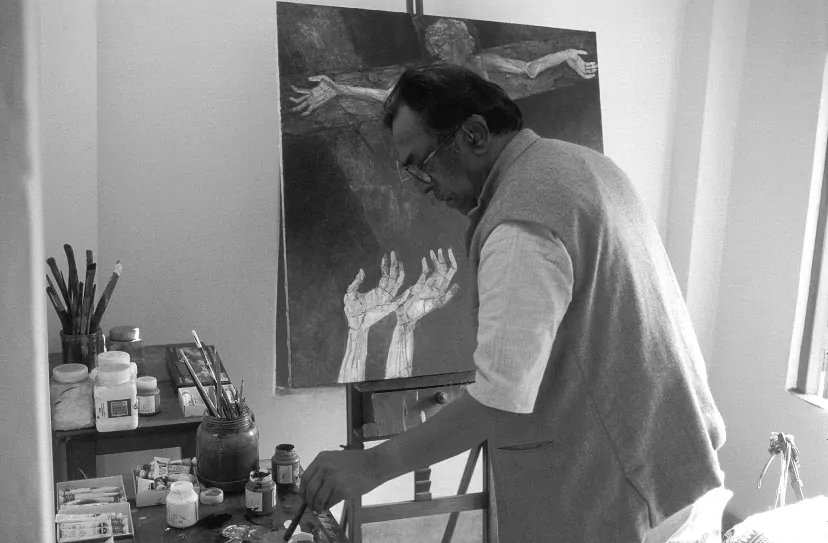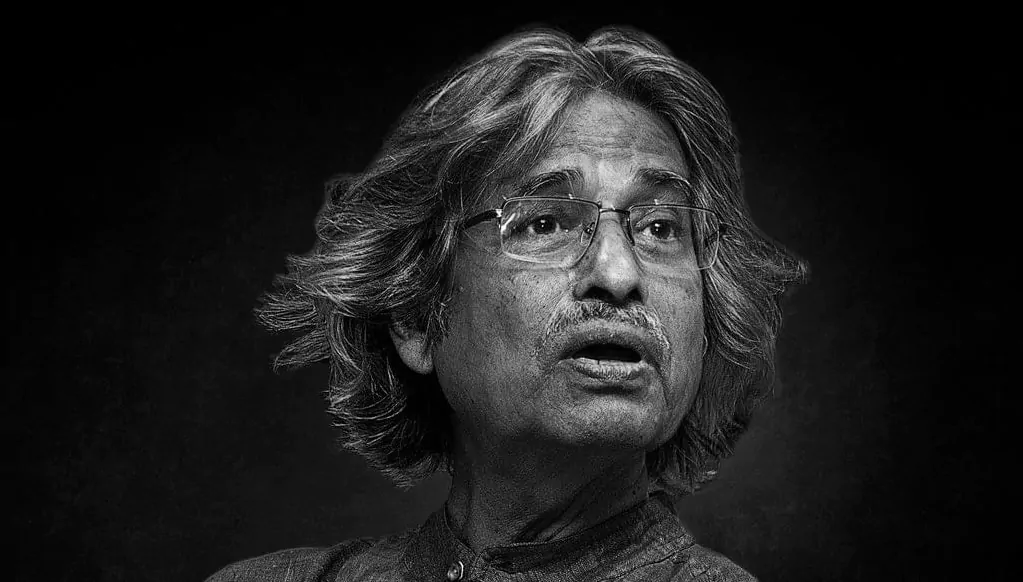Shanu Lahiri: The Artist with a Difference.
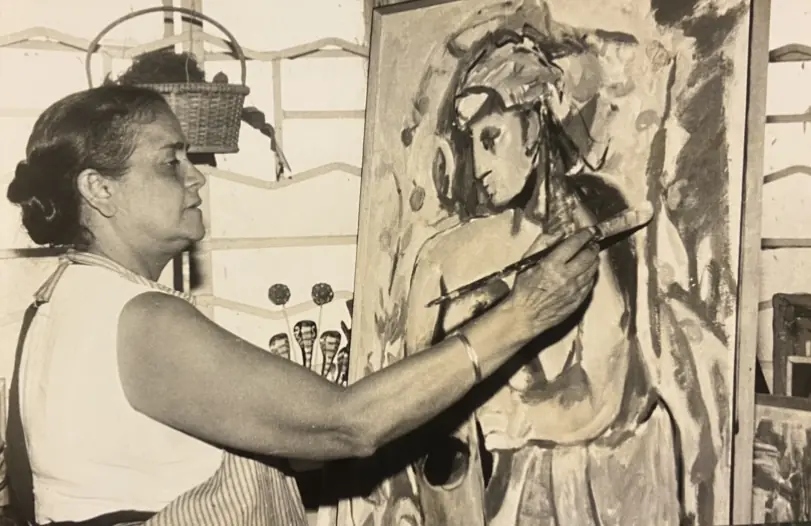
Shanu Lahiri could often at times be mistaken as someone’s fond grandmother-her hair tied into a bun, wise eyes and a soft face had it not been for her trademark red apron and a paintbrush in hand. Her art, was a mix of the soft and definitive- very seemingly commonplace, with surprise base notes. Born on the 23rd of January 1928 in one of Calcutta’s most prominent and culturally elevated families, Shanu was the youngest of seven siblings and the youngest of three sisters in the Majumdar family. It was a family of diverse talents and a household of unusual abundance. By the time she was growing up, her two elder brothers, the writer Kamal Majumdar and the artist Nirode Mazumdar were already established and respected figures in the city’s intellectual and artistic worlds. Much admired for his wealth of words, wit and erudition, Kamal Majumdar would soon grow into an exclusive figure of a ‘writer’s writer’ ; simultaneously Nirode Mazumdar would radically break away from the teachings of the Bengal School, rebel against Abanindranath Tagore and break out from his early ‘oriental’ training to become one of the first modernists and a founding member of the new collective called ‘The Calcutta Group’.
In the year of India’s Independence, Shanu Majumdar entered the hallowed portals of The Government College of Art and Crafts, Calcutta as one of the earliest batch of female students in that institution. This early batch, had some remarkable and dynamic women with whom she shared a close camaraderie. Some years her senior, another fellow-student, Karuna Shaha had by then made history by tearing down the Union Jack from the college gates during the Quit India Movement and getting herself rusticated. In 1947 she rejoined to complete the last two years of her graduation. Like Shaha, Shanu was a leader of sorts of the small number of women who came into the institution during those years-of even the fewer among them who knew they had to give all they had, outdo all their male counterparts, to stake a claim to an artistic profession.
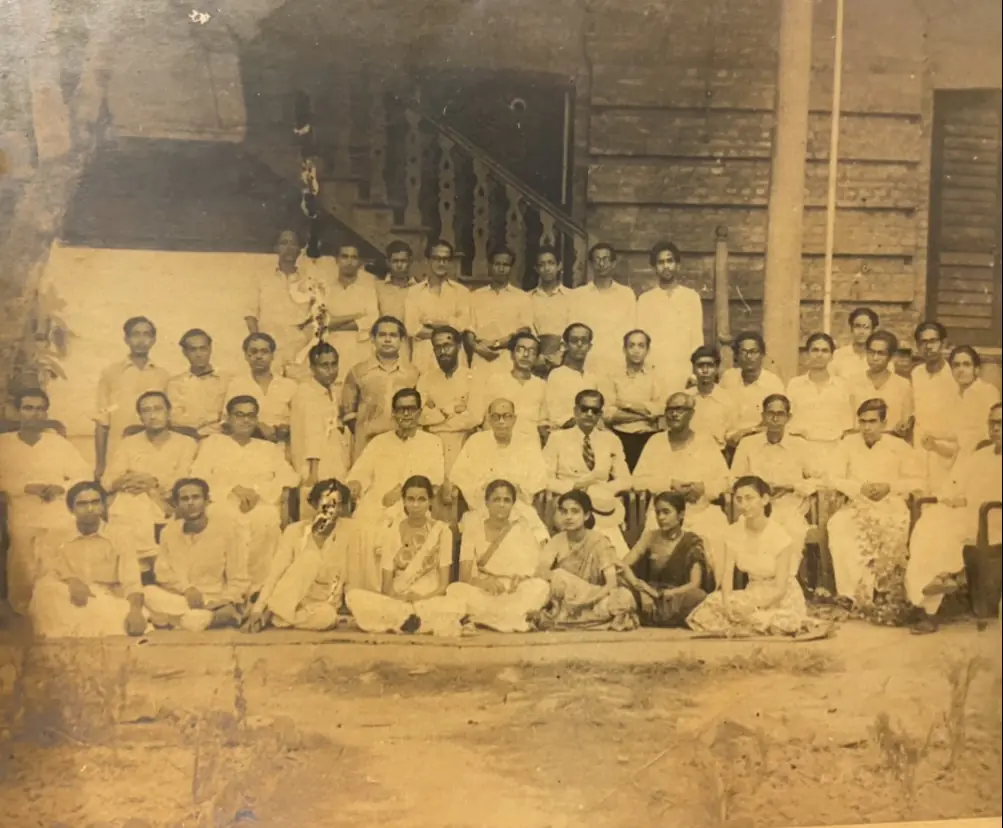
Shanu Majumder (seated in the middle) with the batch of 1947 at the Government College of Art & Crafts with Atul Bose and Ramendranath Chakravorty behind.
At the art college, she entered at a time when Atul Bose was the principal and studied under him for a year, this was followed by Ramendranath Chakravorty who left an abiding impact on her as a student. Basanta Ganguly was another teacher who drilled into the young Shanu the technical aspects of being a good artist. At the art college, she was trained to be an adept draftsman following the curriculum set up by the British colonial system. One of Shanu’s greatest challenges was to emerge from the shadow of her famous brother- Nirode Mazumdar- a shadow that would long hover over her through her own Paris years and for several years after. And it is to her singular credit that she was able to carve out an independent niche for herself while still a student at the Government College of Art and Crafts. In 1950, we see her setting a rare student precedent by holding her first solo exhibition of paintings at 1, Chowringhee Terrace, attracting attention in the press, especially for the inspiration she had so clearly begun to draw from ‘Masters’ like Van Gogh or Picasso. The following year, just as she graduated in 1951,we see her selling her painting to The Salar Jung Museum in Hyderabad and winning the President’s Gold Medal-a first case of a student sharing the honours with a senior artist. Clearly, Shanu Majumdar was entering the art world with a bang. In 1955, holding another solo show at Artistry House in Calcutta, a year before her departure on a French Scholarship to study at the École du Louvre where she learnt art history and art-appreciation and at the Académie Julian she learnt painting. She was already being rated by critics as ” an artist qualified to take her place amongst the best of the Moderns..” Being fiercely and committedly ‘modern’ became of course, the key compulsion of her artistic life, from the time of her student days through the many thematic and stylistic options she had explored.
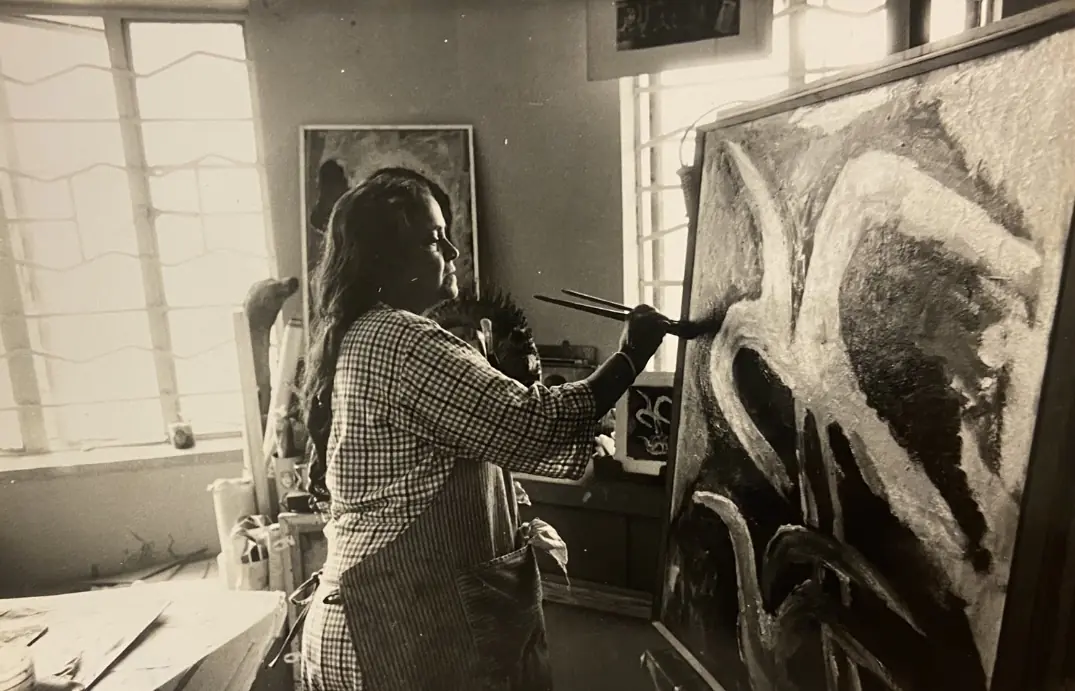
Shanu Lahiri in her studio.
The 50’s marked the formative years for the artist, with the highpoint being the two years she spent in Paris, studying and painting, observing and absorbing the works by the artists she admired and respected for so long, which unfolded before her eyes each time she visited the museum. Like so many of her generation Paris to her was the Mecca of modernism and it was this legacy of the French ‘high modern’ which left its most lasting impact on her own innovations with form, colour and composition. While Picasso and Matisse remained for long the most cognizable points of reference for her style, the art she saw first-hand during those years lived on in her many other subtle traces. Years later, the blackened brusque faces of Roualt, the animal visages of Chagall or the “Sleeping Gypsy” of Douanier-Rousseau would keep returning in her work in new guises. Breaking free from the strictures of Western Academic training and the lingering stereotype of ‘Indian-style’ painting was crucial to making the new modernist art of these years.
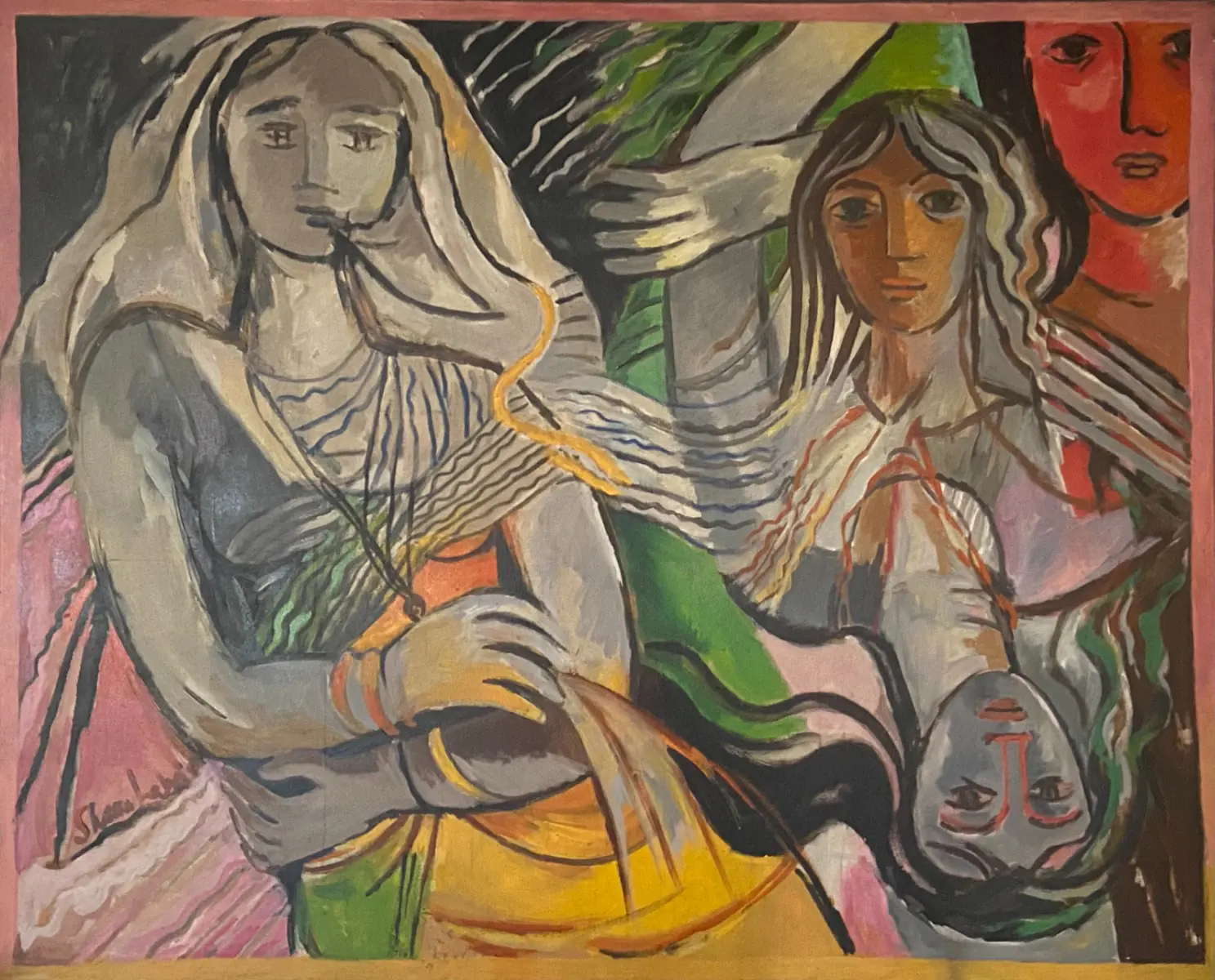
Women by Shanu Lahiri.
The period that followed her return from Paris turned out, however to be one of intense anguish and self-reckoning- a time when she impetuously threw away all her brushes and palettes, convinced that after all that she saw abroad, there was nothing left for her to do as an artist. The 60’s in retrospect saw her return back to painting when the news of Karuna Shaha’s solo exhibition held in 1962 immediately after her return from the Academy in Florence, which jolted her back. This was also a time when she embarked on the first of the many series to follow. The ‘Dream Series’ of the 60’s led to an imaginative re-interpretation of myths and fables which became a hallmark of her work right through the 70’s and 80’s. One of the most visually arresting was her ‘Ragamala’ series of 1978, where the eye is rivited by the use of colour and where the imagery of each different Ragas and Raginis of Hindustani classical music is laden with the resonance of their mood and melody. With her ‘Thakumar Jhuli’ series of 1982, we encounter a new genre of densely narrative compositions, bursting with restless macabre figures which lure us back to the distant world of these fairytales from our childhood. Towards the end of the 80’s a certain maturing point came in her work-a time that saw the greatest energy and imagination bounded by the firmest moulding of the shape of her own formal language.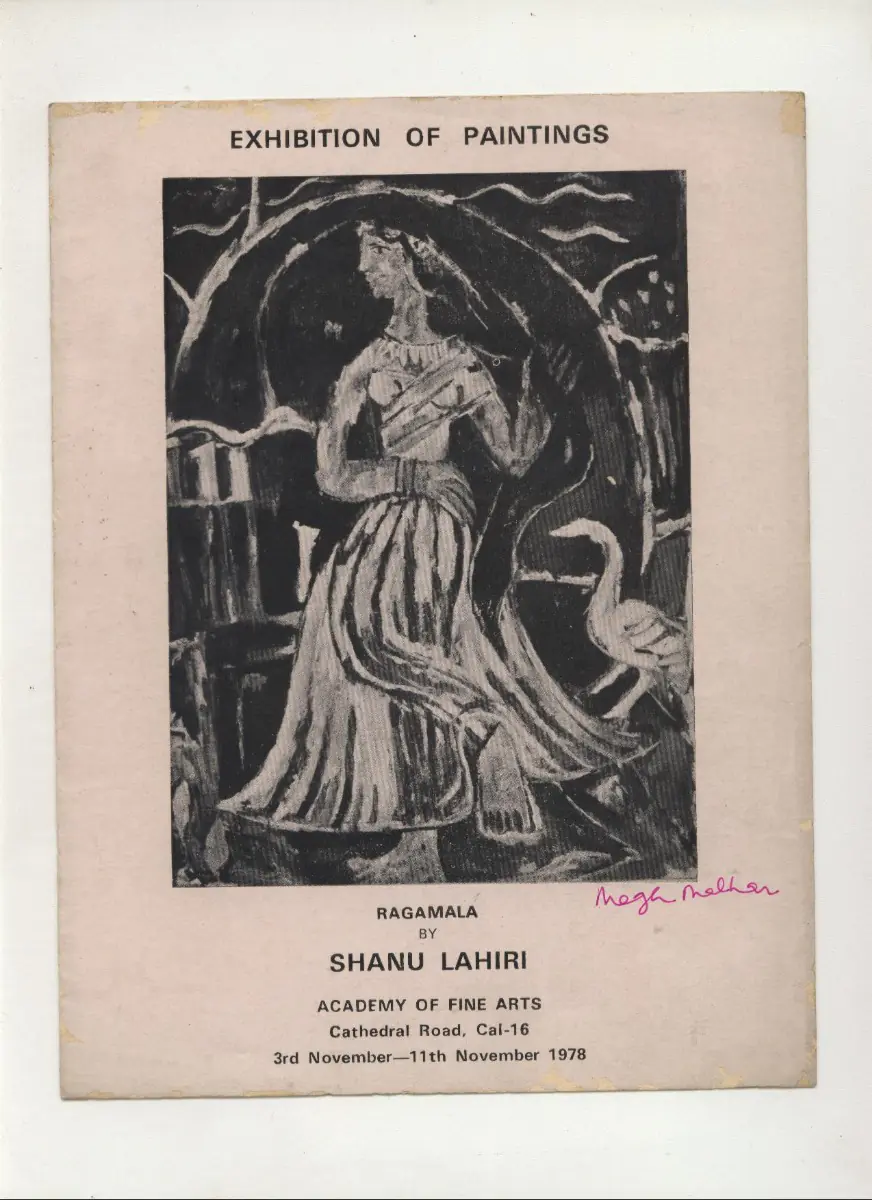
Catalogue Cover of Ragamala Series by Shanu Lahiri.
Large canvases, bristling with life, line, colour, brushwork and splattered faces and torsos carried the unmistakable stamp of a Shanu Lahiri style. By the latter half of the 80’s a noticeable shift towards a new simplification and economy of form, matched by a new restraint and reticence dominated her work. While retaining their scale, her compositions began to work with a modulated palette, a choice of just one or two colours and the force of a single contoured image. These effects are best seen in the large outpour of lone staring faces and seated female figures of these years and in a series of women on hand-pulled rickshaws-a Calcutta phenomenon, where the dynamism of lines seems to make colour more and more redundant. It was also a time when an increasingly public profile of Shanu Lahiri, as an educationist, organiser and art-activist. The decade now saw the artist engaged in a public role. Following the practice of artists creating the image of goddess Durga at Bakulbagan which started in 1975 by Nirode Mazumdar, Shanu Lahiri designed the Durga idol twice for Bakulbagan, following the lead of other artists who each year created modern and stylistic idioms to work within a clay-modelled image of the goddess.

Intense and saturated colours dominated the oeuvre of Shanu Lahiri.
From her position as Reader in the Department of Painting at Rabindra Bharati University, she became Professor and Head of the Department and then Dean of the Visual Arts Faculty in 1985. Administrative duties however never curbed her initiatives at conceiving new kinds of student and exhibiting activities. In 1983, in the middle of these commitments, she became one of the founding members of the first working unit of women’s artists in the city, a body called ‘The Group’ consisted of five members- Karuna Shaha, Shanu Lahiri, Meera Mukherjee, Santosh Rohatgi and Shyamasree Basu.Such an organization of women easily became the target of much implicit scorn and condescension in contemporary art circles. The artists, however remained resolute, most clear-cut and unequivocal about the necessity for such a forum of women artists. Women had for long been obscured in their profession, echoing what Virginia Woolf once stated- “For most of history, anonymous was a woman.” So it was in that very identity that the artists would have to fight for equal participation and the right to be taken seriously in the art world. Since its inception in 1983, The Group exhibited annually every year at The Academy of Fine Arts. In 1986 and 1987, the exhibitions travelled for the first time outside of Calcutta, to the Triveni Kala Sangam in New Delhi and The Jehangir Art Gallery in Bombay. Such wider exposure was crucial for the artists. Despite holding exhibitions at regular intervals, with hardly any sales was disappointing. This is where a different approach to marketing and promotional activity would have helped, enabling a greater degree of engagement with more modern and avant-garde art trends.
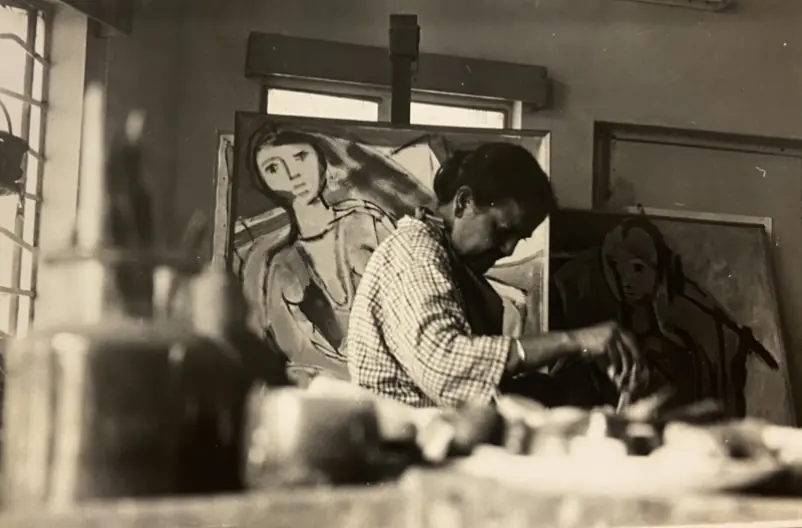
Shanu Lahiri at work.
Even more important during these years was her passionate involvement with a host of public art projects to beautify the walls, streets and parks of the city. Her ‘Love Calcutta’ project involved groups of school children, vendors and slum dwellers to paint their own murals on the walls in different parts of the city and as she went about setting up open-air sculptures in metal, concrete or fibre-glass in various parts of the city. The fact that today hardly any of her murals or sculptures like ‘Parama’ survive is a comment on the apathy and callousness of the public culture of the city. In the last two decades, the 1990s and 2000s, her studio had been a place of continued inventiveness and innovations. Retaining her primary commitment to painting and drawing, she tested new mediums and surfaces, experimenting in different phases with enamel painting on acrylic sheets, painting on wooden and ceramic plates, etchings on X-ray plates and “torch light” drawings on bromide paper. A parallel rising urge for sculpture had seen her move from small clay models and perfume bottle figures cast in bronze. Through her art, Shanu Lahiri addressed the contemporary realities of society.

Cats by Shanu Lahiri, 2002.
Alongside her continued penchant for large canvases-for the challenge of magnitude and scale-Shanu Lahiri did not betray any signs of halting or rounding up. The spirit and verve by which she has always been known remained unflagging. So where and how do we place Shanu Lahiri in the context of India’s modern art history? In some ways, it is hard to narrate the history of those who cannot be positioned within the top league, who cannot even find a place within the national canon of ‘women artists’. While her generation marked the first entry of women into the art schools all over the country in the 1940’s, it also marked the first conscious attempts by women to break into a public sphere and carve out their own artistic careers. The reductionist view of having only a few artists of value is a grave misrepresentation of the sheer talent and creativity of hundreds of artists. This myopic view and understanding of India’s artists raises only a few to the sky while others die without getting their due. With academic research on Indian art being minimal, institutions being underdeveloped and museums being under-resourced with very little archival material-it is no small irony that more national publicity and recognition should have come to Shanu Lahiri or even a proper publication on her life and works should have been launched, who like many others of her generation never featured within the national mainstream circuit yet remained committed and unceasing at the practice of her art for more than sixty years.
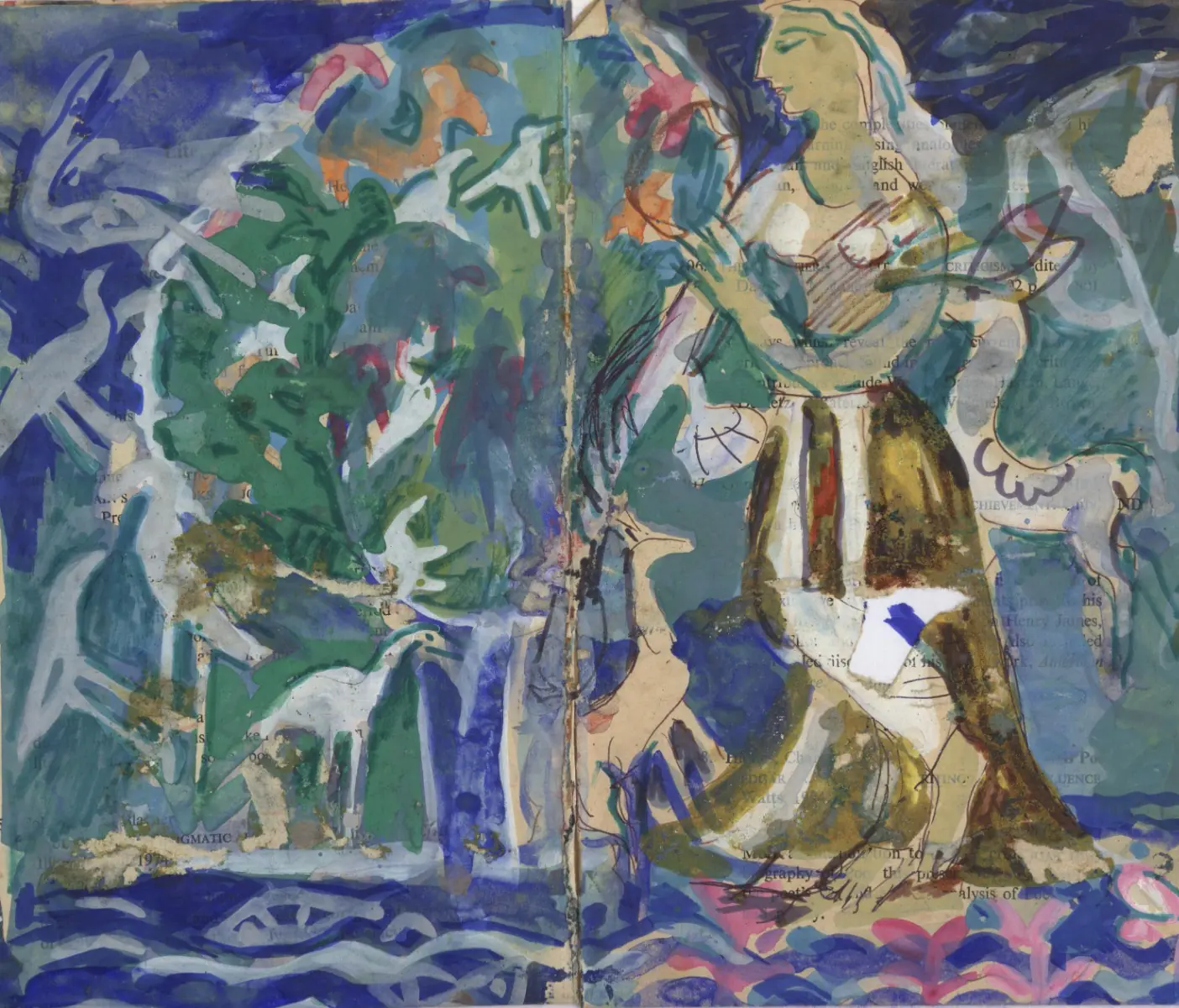
Ragamala by Shanu Lahiri,1978.
- Vinayak Pasricha.




